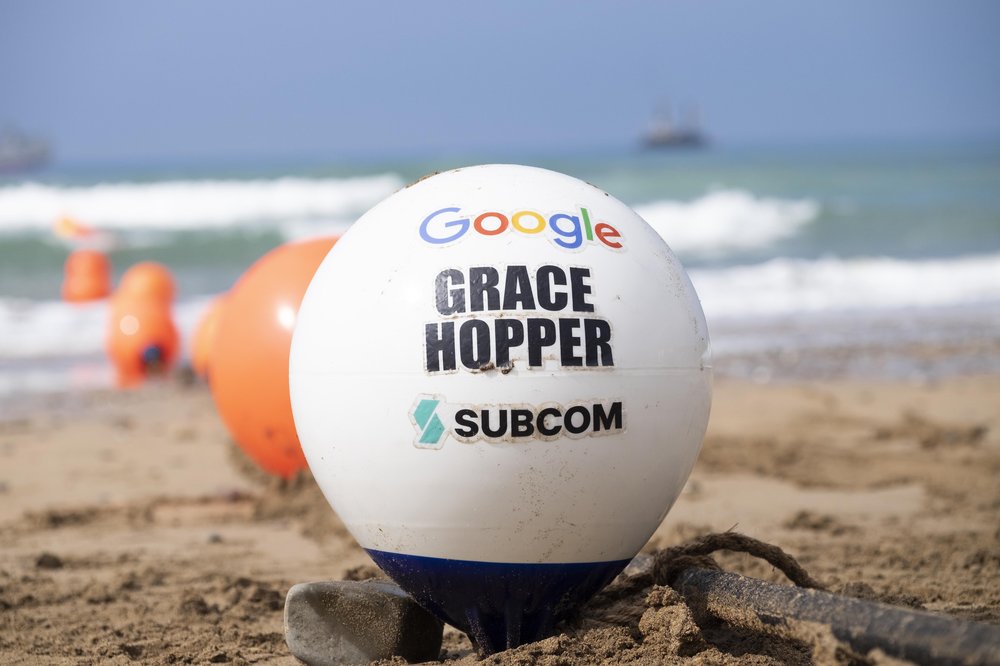Our Grace Hopper subsea cable has landed in the UK
Last year, we announced a new subsea cable — named Grace Hopper after the computer science pioneer — that will run between the United States, the United Kingdom and Spain. The cable will improve the resilience of the Google network that underpins our consumer and enterprise products. The 16-fibre pair Google-funded cable will connect New York (United States) to Bude (United Kingdom) and Bilbao (Spain).
Today, the Grace Hopper cable has landed in Bude, Cornwall.
Many people around the world use Google products every day to stay in touch with friends and family, travel from point A to point B, find new customers or export products to new markets. As our first Google-funded cable to the U.K., Grace Hopper is part of our ongoing investment in the country, supporting users who rely on our products and customers using our tools to grow their business.
We know that technology is only becoming more important for the U.K. economy. The amount technology contributes to the U.K. economy has grown on average by 7% year on year since 2016. And U.K.-based venture capital investment is ranked third in the world, reaching a record high of $15 billion in 2020, despite the challenging conditions from the COVID-19 pandemic. What’s more, 10% of all current U.K. job vacancies are in tech roles, and the number of people employed in the tech sector has grown 40% in two years. With this in mind, improving the diversity and resilience of Google’s network is crucial to our ability to continue supporting one of the U.K.’s most vital sectors, as well as its long-term economic success.
Grace Hopper represents a new generation of trans-Atlantic cable coming to the U.K. shores and is one of the first new cables to connect the U.S. and the U.K. since 2003. Moreover, with the ongoing pandemic fostering a new digital normal, Google-funded subsea cables allow us to plan and prepare for the future capacity needs of our customers, no matter where they are in the world. Grace Hopper will connect the U.K. to help meet the rapidly growing demand for high-bandwidth connectivity and services.

Grace Hopper buoy landing on the beach in Bude, Cornwall
Alongside Curie, Dunant, Equiano and Firmina, Grace Hopper is the latest cable to connect continents along the ocean floor with an additional layer of security beyond what’s available over the public internet. We’ve worked with established channels and experts for years to ensure that Grace Hopper will be able to achieve better reliability in global communications, and free flows of data.
Following a successful Bilbao landing earlier in September, Grace Hopper also marks our first ever Google-funded route to Spain, taking a unique path from our existing cables, such as Dunant, which connects the U.S. and France, and Havfrue, which links the U.S. and Denmark. The cable will use novel “fibre switching,” which allows us to better move traffic around outages for increased reliability. Once it is complete, Grace Hopper will carry traffic quickly and securely between the continents, increasing capacity and powering Google services like Meet, Gmail and Google Cloud.
Grace Hopper will use this new switching architecture to provide optimum levels of network flexibility and resilience to adjust to unforeseen failures or traffic patterns. The multi-directional switching architecture is a significant breakthrough for uncertain times, and will more tightly integrate the upcoming Google Cloud region in Madrid into our global infrastructure.
With the landing of the Grace Hopper cable in Cornwall, we look forward to supporting the next great U.K. tech innovations.
by Jayne Stowell via The Keyword
Comments
Post a Comment